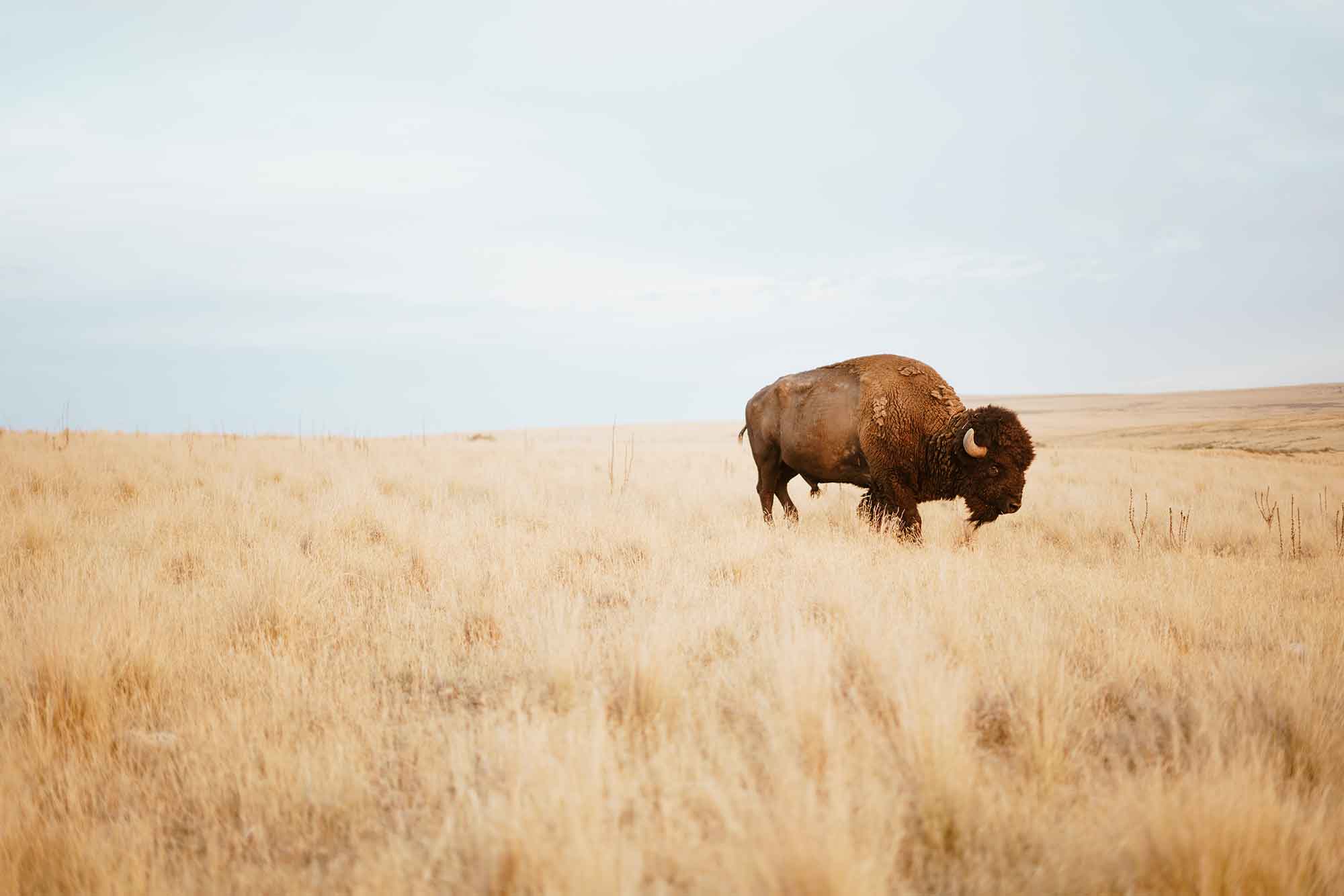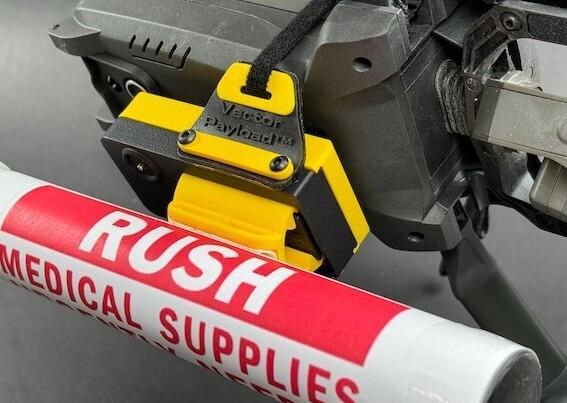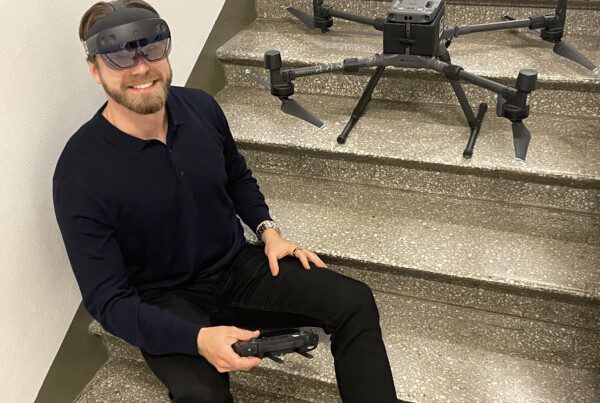We recently wrote a white paper that details how we believe augmented reality can aid pilots flying drones and also pass SORA requirements more easily. This is the first of a set of posts to show what each country’s regulatory body is doing to help each countries industry, starting with the USA (specifically North Dakota, hence the iconic Bison!).
The USA
The Federal Aviation Administration (FAA) is the primary regulatory body for unmanned aircraft system (UAS) operations in the United States. The FAA is a federal agency within the Department of Transportation (DOT) and is responsible for regulating all aspects of civil aviation in the United States, including UAS operations.
An example of how the FAA is managing UAS operations is the creation of the Vantis network.
What is the Vantis Network?
The Vantis Network is an ambitious project aimed at creating an unmanned aircraft system (UAS) ecosystem in North Dakota, USA, with the goal of advancing the UAS industry and providing economic opportunities for the state and its residents. The project is a collaboration between the North Dakota Department of Transportation (NDDOT), the Northern Plains UAS Test Site (NP UAS TS), and numerous private partners.
The Vantis Network is a complex system that includes multiple UAS operating locations, communication networks, and other supporting infrastructure, all designed to enable safe and efficient UAS operations across the state. The project is being developed in phases, with the first phase focused on building out the infrastructure and conducting initial flight testing and demonstrations.
One of the key components of the Vantis Network is the development of a state-wide network of UAS ground control stations, which will enable UAS operators to fly missions beyond visual line of sight (BVLOS) while maintaining real-time communication and control over their aircraft. This network will be supported by a variety of communication technologies, including satellite, cellular, and dedicated data links, to ensure reliable and secure data transfer between the UAS and ground control stations.
We hear over and over that BVLOS flight is the next major step for the industry. Flight beyond visual line of sight will unlock significant value for both service providers and customers. BVLOS flight is critical for the drone industry to scale, and the entire drone ecosystem is investing heavily in the technology and infrastructure to make it work.
Around the world, regulators are recognizing that BVLOS flight can be executed safely, and are granting permissions to companies like uAvionix to help drive rulemaking forward. Software solutions like AirHUD are going to become standard in the drone industry as regulators move towards standardizing BVLOS flight.
Miriam McNabbEditor in chief - Dronelife.com
Supporting infrastructure
In addition to the ground control station network, the Vantis Network includes a range of supporting infrastructure, including a variety of aircraft hangars and maintenance facilities, as well as a range of data analytics tools and services to support UAS operations and analysis. The project also includes a significant focus on workforce development and training, with the goal of creating a skilled and knowledgeable workforce capable of supporting the growing UAS industry.
The Vantis Network has already achieved a number of significant milestones since its inception, including the successful completion of numerous flight tests and demonstrations, as well as the development of a range of supporting policies and regulations. These achievements have helped to position North Dakota as a leader in the UAS industry, and the Vantis Network is seen as a critical component of the state’s economic development strategy.
Regulations that led to industrial benefits
One of the key benefits of the Vantis Network is the potential for UAS operations to support a wide range of industries and applications. For example, the system could be used to support precision agriculture operations, allowing farmers to monitor crops and livestock more effectively and efficiently. It could also be used to support public safety operations, such as search and rescue or firefighting missions, enabling responders to access remote or hazardous areas more safely and effectively.
To ensure compliance with FAA regulations, the Vantis Network has worked closely with the FAA to develop a comprehensive regulatory framework that enables safe and legal UAS operations across the state. This framework includes the use of BVLOS operations and real-time communication between UAS and ground control stations, which are subject to strict FAA requirements and oversight.
Significant Investment
The Vantis Network is a significant investment by the state of North Dakota, with total funding for the project expected to reach $33 million. This funding is being provided by a range of public and private sector partners, including the North Dakota Department of Transportation (NDDOT), the Northern Plains UAS Test Site (NP UAS TS), and numerous private industry partners.
Of the $33 million total investment, $28 million is being provided by the NDDOT, with the remaining $5 million being provided by private sector partners.
The Vantis Network is an exciting and innovative project that has the potential to transform the UAS industry and provide significant economic benefits for the state of North Dakota. By creating a robust UAS ecosystem that includes the necessary infrastructure, policies, and workforce development programs, the Vantis Network is helping to position the state as a leader in the UAS industry and driving innovation and growth across a range of industries and applications.
Summary
I’m not saying that we need to invest $33M in Finland (or perhaps many parts of Europe) on this kind of infrastructure as the USA is a completely different market. However we do need to help the regulators to assess the safety of our drone flights, especially when it comes to the situational awareness and BVLOS capabilities that can save so much time and money. We would like to suggest you take a look at our free white paper that summarises a number of industries we believe AR can help by assisting SORA to make risk assessments more efficiently.
Emilie is the chief marketing officer of Anarky Labs, a pioneer in developing situational awareness software for drone operations. As CMO, Emilie leads the go-to-market strategy and actions to make AirHUD a true European alternative when it comes to BVLOS operations to improve drone management. Emilie is best reached by email.






One Comment